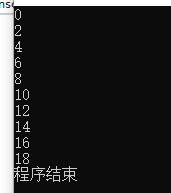C++CLI——4数组、泛型、集合与属性
C++CLI——4数组、泛型、集合与属性
C++数组
在c++中,数组的大小必须在编译时确定,并且将数组传递给函数时,传递的只是数组起始地址,所以要想办法连同数组大小一同传递给函数。
int arr[4] = { 1,2,3,4 };
int arr1[] = { 1,2,3,4 };
int arr2[2][3] //多维数组
动态创建数组
C++中直接声明数组需要明确数组的大小,但是可以使用new来动态创建数组,虽然这样数组也有固定的大小,只是在运行期间可以确定需要多少元素后再创建制定大小数组。
int* pa = new int[size];//size为运行时确定
delete [] pa;//不用时要释放
C++/CLI泛型
C#中具有泛型类型,C++/CLI中也具有泛型类型。
generic <typename T>
ref class Mylist
{
public:
void Add(T obj);
T GetAtIndex(int idx);
};
//使用时制定泛型类型
Mylist<String^>^ lists = gcnew Mylist<String^>();
C++中的泛型模板和.net中的泛型虽然功能很相似,但是工作方式完全不同,所以在C++/CLR中都得到了支持。两者主要的不同之处有:
- 模版是在编译时就实例化好的,而泛型是在运行时仍然是泛型的;
- 模版支持特化、非类型模板参数和模版参数等,而泛型不支持,要简单的多;
- 泛型类型不能从类型参数继承,而模板可以;
- 泛型不支持元编程;
- 泛型类型支持类型参数约束,模板不支持。
托管数组
与C++不同,托管数组直接分配到堆上,首gc的管理,而且索引不再制定从某个地址偏移。并且要用Array关键字来声明。
array<int>^ arr1;
array<IntVal^, 2>^ arr2;//2维数组
//初始化
array<int>^ arr1 = gcnew array<int>(3) { 1, 2, 3 };
array<int>^ arr2 = gcnew array<int> {1, 2, 3};
array<int>^ arr3 = {1,2,3};
对于引用类型的数组,实际上是句柄的数组。例如main函数int main(array<System::String^>^ args),实际上是String的句柄数组。另外.net提供了for each循环来遍历数组,与C#一样任何实现了IEnumberator接口的集合都可以使用for each
array<int>^ arr3 = {1,2,3};
for each (int s in arr3)
{
Console::WriteLine(s);
}
多维数组
与C++不同,多维数组的维数要在尖括号中定义,且读取多维数组也要在一个方括号中添加索引。
array<int, 2>^ array2d = gcnew array<int, 2>(3, 3);
array2d[1, 2] = 3;
array<int, 2>^ array2d_1 = {
{1,2,3},
{4,5,6},
{7,8,9}
};
Console::WriteLine(array2d_1[0,1]);
List<T>
在实际开发过程中,更多的使用泛型集合类,因为集合可以改变大小。
using namespace System::Collections::Generic;
List<int>^ lst = gcnew List<int>();
lst->Add(0);
lst->Add(1);
lst->Add(2);
List<int>^ lst = gcnew List<int>(10);//指定容量
SortedList<String^, int>^ sl = gcnew SortedList<String^, int>();
sl->Add("a", 1044);
STL/CLR
? STL容器是标准C++一部分,提供了一系列高性能、可扩展的集合类。C++/CLi提供了托管STL版本。使用方法与STL类似。
#include <cliext/vector>
using namespace System;
using namespace cliext;
int main(array<System::String^>^ args)
{
vector<double> v1;
for (int i = 0; i < 10; i++)
{
v1.push_back(i * 2);
}
for (vector<double>::iterator it = v1.begin();it!=v1.end(); it++)
{
Console::WriteLine(*it);
}
Console::WriteLine("程序结束");
}

属性
在.net中一般不会公开字段,而是公开属性。属性本身就是方法包含get和set。在C++/CLI中支持两种属性,标准量属性和索引属性。
标量属性
标量属性也就是最常见的属性,将私有字段使用属性保护起来,使用property来声明,而且可以根据需要只实现get以满足只读属性的要求。
ref class Person
{
public:
property String^ Name
{
String^ get()
{
return name;
}
void set(String^ value)
{
name = value;
}
}
property int Age
{
int get()
{
return age;
}
void set(int value)
{
age = value;
}
}
private:
String^ name;
int age;
};
int main(array<System::String^>^ args)
{
Person^ p = gcnew Person();
p->Name = "小明";
p->Age = 10;
Console::WriteLine("{0}今年{1}岁", p->Name, p->Age);
Console::WriteLine("程序结束");
}

自动属性
在C#中是可以自动实现属性的如public int Order { set; get; } ,C++/CLI中同样可以:property String^ Name。
属性继承
因为属性本质上就是方法,所以可以实现虚属性,以达到重写属性的目的。
public ref class Shape abstract
{
public:
virtual property double Area;
};
public ref class Circle:Shape
{
private:
double r=1;
public:
virtual property double Area {
double get() override
{
return Math::PI * r * r;
}
}
};
属性索引
属性索引就是可以在对象上直接使用[]来访问,其工作方式与标量属性相似,只需要在属性名后面的方括中包含索引类型就可以
property double Name[int],这段代码定义的索引属性为Name,其索引类型为long,在get和set函数中的第一个参数必须为索引。
property double Name[int]
{
double get(int idx){...}
void set(int idx,double vlaue){...}
}
double bal = a1->Name[10];//使用
如果使用defaut名称,可以在对象上直接访问
ref class Account
{
private:
List<int>^ lst = gcnew List<int>();
public:
Account()
{
lst->Add(1);
lst->Add(2);
lst->Add(3);
lst->Add(4);
lst->Add(5);
lst->Add(6);
}
property int Value[int]
{
int get(int idx)
{
return lst[idx];
}
}
//使用default可以在对象上直接访问
property int default[int]
{
int get(int idx)
{
return lst[idx];
}
}
};
int main(array<System::String^>^ args)
{
Account^ a = gcnew Account();
int s = a->Value[0];
int ss = a[1];//使用default可以在对象上直接访问
Console::WriteLine(s);
Console::WriteLine(ss);
Console::WriteLine("程序结束");
}

本文来自互联网用户投稿,该文观点仅代表作者本人,不代表本站立场。本站仅提供信息存储空间服务,不拥有所有权,不承担相关法律责任。 如若内容造成侵权/违法违规/事实不符,请联系我的编程经验分享网邮箱:veading@qq.com进行投诉反馈,一经查实,立即删除!